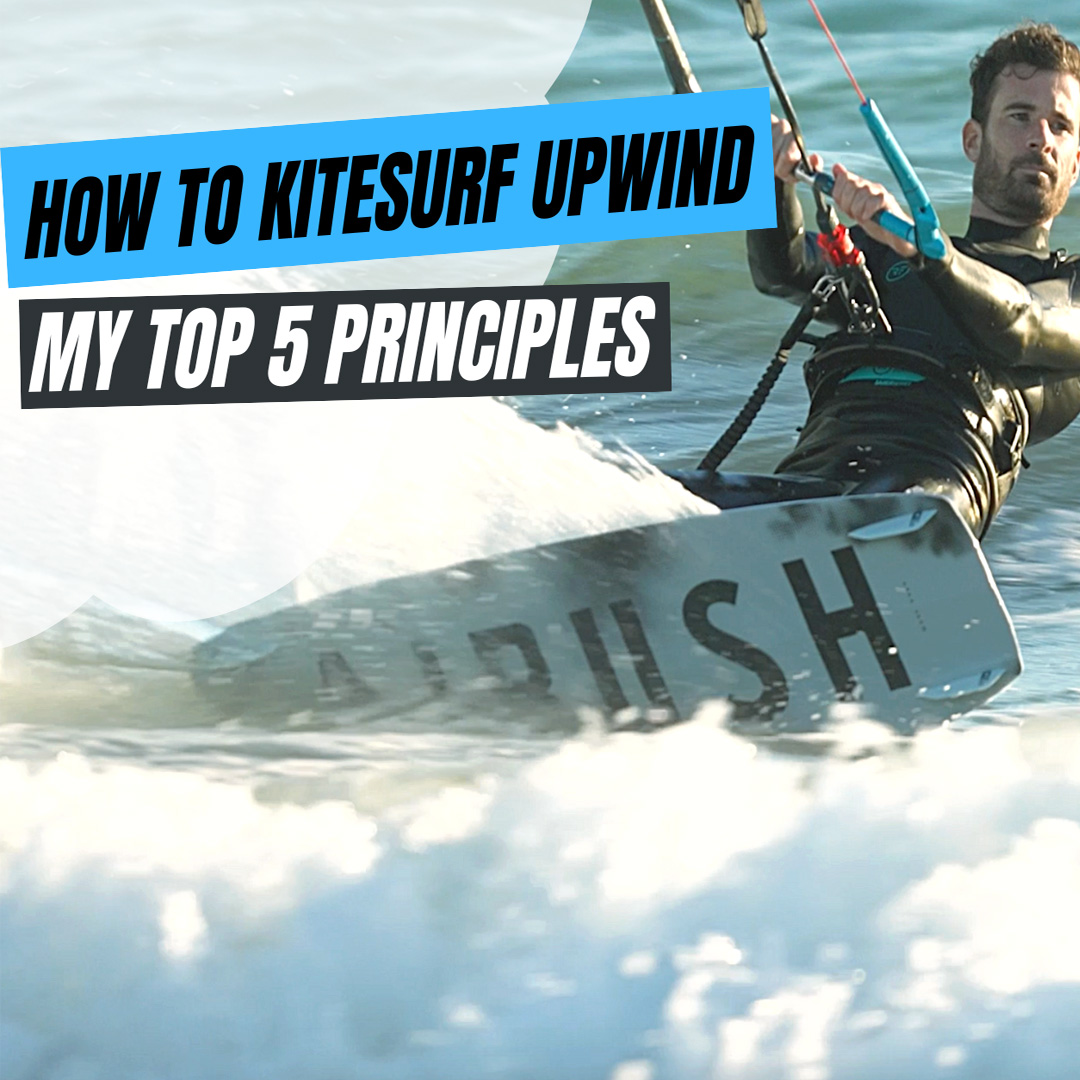Hello guys! Welcome to another blog post about one of the most important things to learn when you're a beginner kitesurfer. I've seen people struggling a lot with this and for some people it can take many months until they learn how to ride upwind properly, that's why I though of the most simple way to put it, so you can focus only on 5 principles to ride upwind. Hope this post is useful for you! And if you like it, please subscribe to my Youtube Channel because there's more coming!
Kite and Board
Choose a light board with less rocker. Delta type Kite such as the Airush lithium are great for riding upwind super easy, as it’s shape allows the kite to travel to the very edge of the window, they’re also very easy to power up and down, and very easy to generate speed by moving the kite.
Now that we have selected the right equipment, it’s time to focus on the main 4 principles for going upwind,which are the posture, speed, kite position and board angle.
Posture on riding upwind
Before reaching our posture, it’s important we dominate our water start, so then we can focus on riding upwind. The main thing for us at this stage is to focus on stand up, gain speed while we ride downwind for a couple meters, and then we can start going upwind.
It’s important to keep a nice posture for riding upwind, that way we can resist the bar pressure with our whole body and we reduce back pain and tiredness so we can also ride comfortably for many hours without getting tired.
A lot of beginners use seat harnesses, so they force the ass to be higher up, as this is a very common mistake on beginners.
You don’t need a seat harness to achieve this, you can ride with a nice back harness but just remember to keep your back straight and avoid poo stance.
You should lean back using your back and not your ass, that way you can be laying down comfortably on a straight position without damaging your back, and it will also help you put more pressure on the water.
The more pressure you put on the water, the easy it’s to ride upwind. Your board will act as a sailboat fin and will keep your kite from pushing you downwind.
Speed
You can’t know the right speed, you just have to feel it depending on the chop, it’s important your board is glued to the water and you try to ride the chop, this will also help reduce pain on your knees. On flat water you can obviously go a lot faster since you don’t have to ride the chop, it’s important to lift your legs when you’re riding the chop.
How to regulate speed?
First we start by moving the kite, to go from 0 speed to our comfortable riding speed. If we’re getting too much speed we have to sheet out the bar, and we can use that lack in power to direct our board a little more upwind.
Kite position
It’s super important to have the right kite position when riding upwind.
The perfect kite position is 45 degrees or lower.
It’s very important that we keep this in mind when the wind picks up, it’s very common that riders will bring the kite up to get less pressure when the wind picks up, but this will drag us downwind. Our goal is that the kite is on the edge of the wind window, so we should put it lower, and as it will be facing the edge of the window, this will make the kite slowly want to be there. It will make it a lot easier for us to direct there.
Board angle
For changing speed and direction it’s not only about our kite. You can also regulate your speed using your board. There’s 2 ways for you to change the board direction:
Lean more.
This will make you go more upwind, but if you lean too much you will loose a bit of control and the position will be a little bit uncomfortable.
Push or pull with your back foot.
If you pull too much with your back feet, you will ride downwind and gain speed, this is useful if you want to accelerate to your correct riding speed. For the right upwind speed you should press with your back feet all the time, but don’t press too much, otherwise you will go too upwind and create resistance. This movement is very useful, combined with bringing the kite up, when you want to stop very fast to avoid collision or crashing against the beach.

